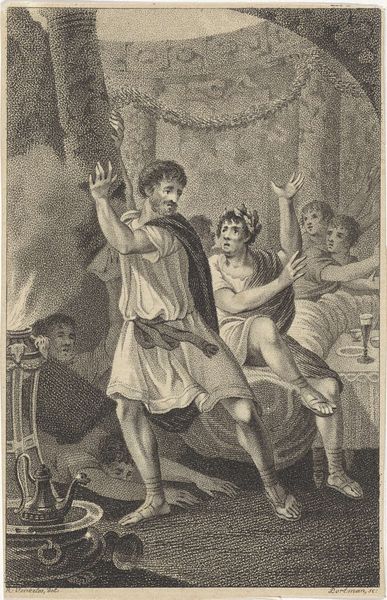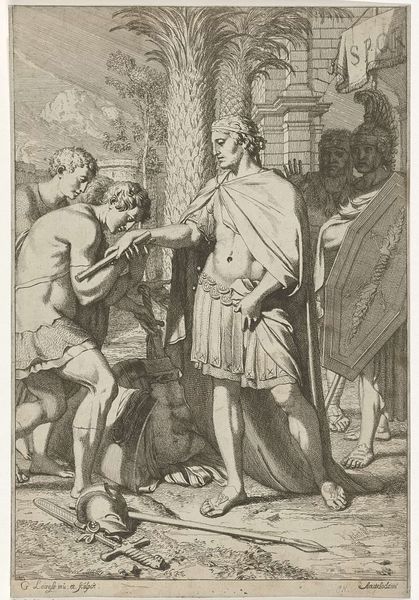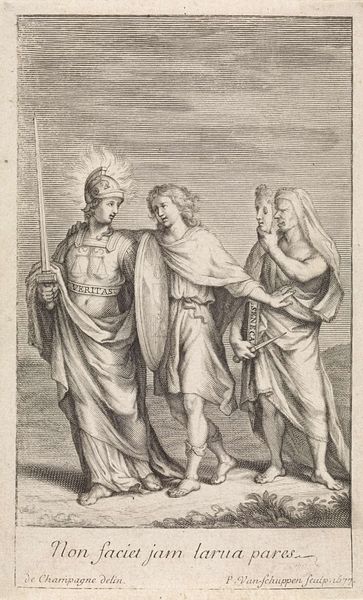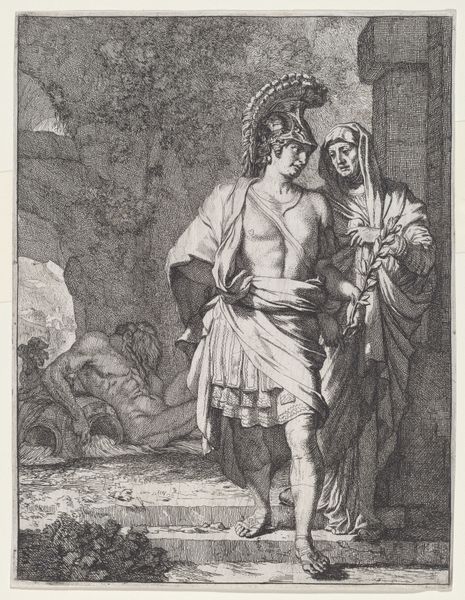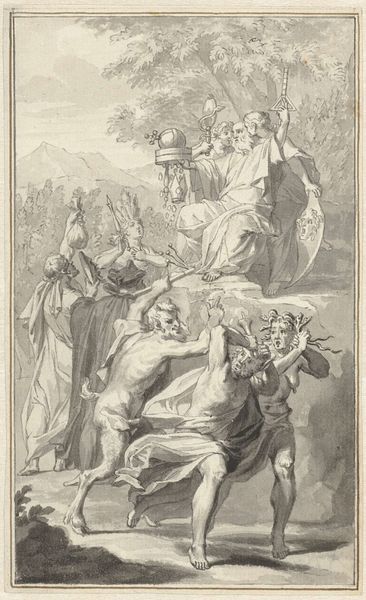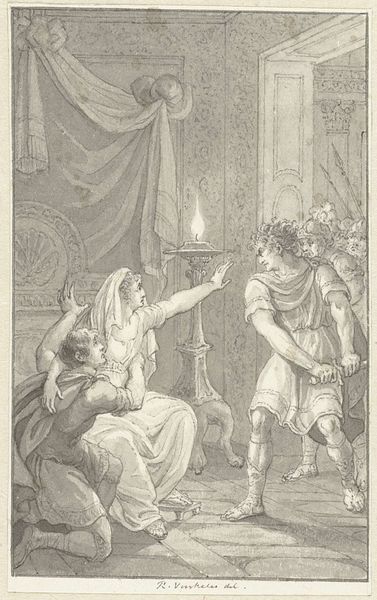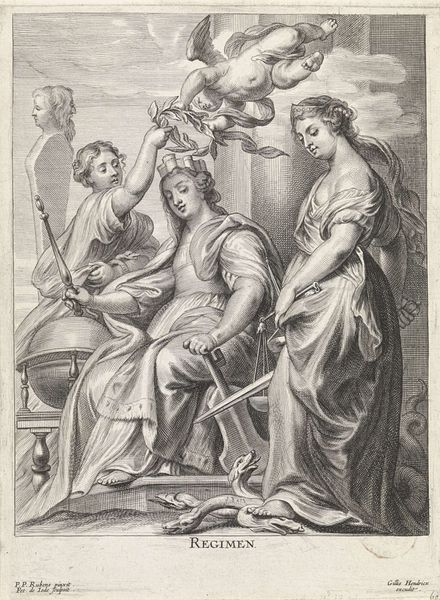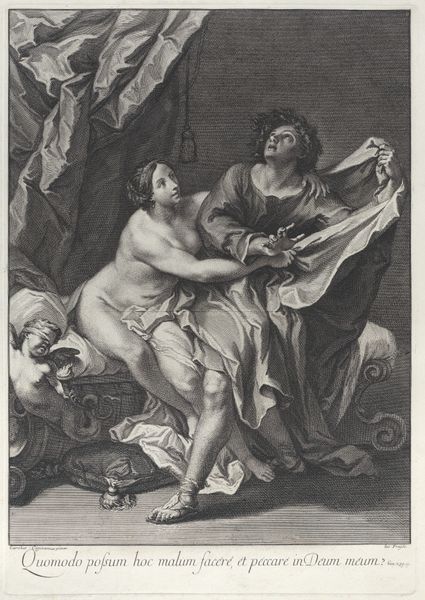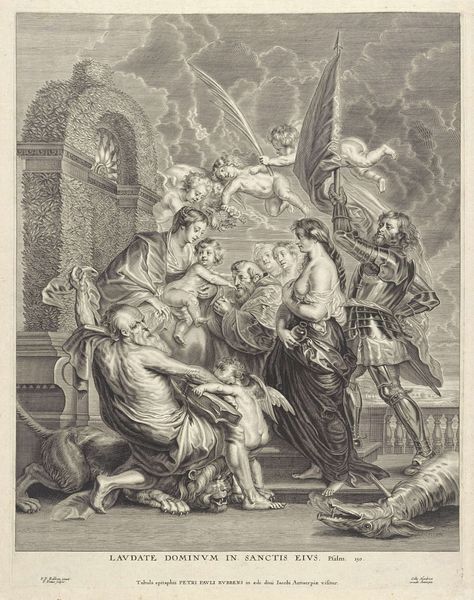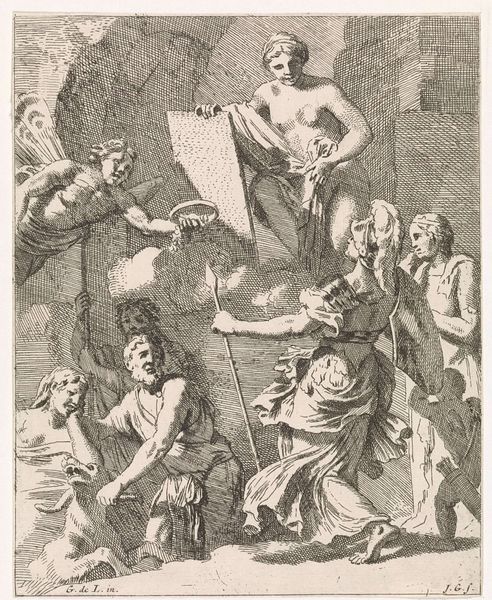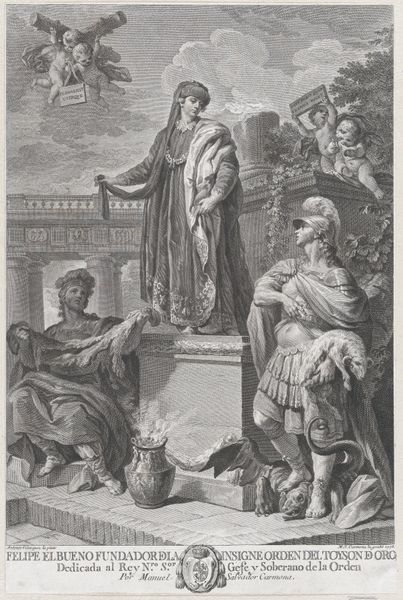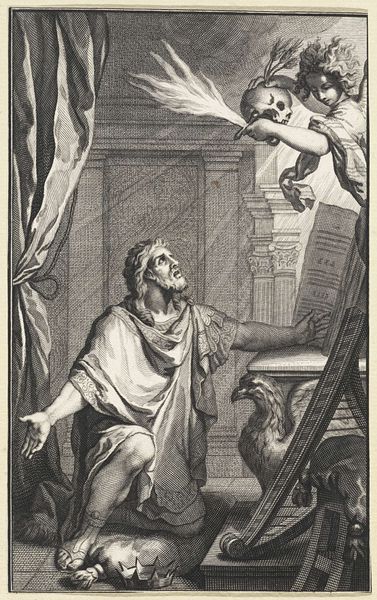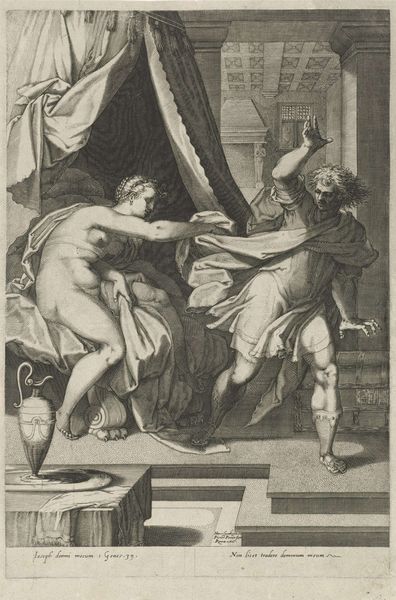
drawing, paper, ink
#
drawing
#
neoclacissism
#
narrative-art
#
caricature
#
figuration
#
paper
#
ink
#
pencil drawing
#
pen-ink sketch
#
portrait drawing
#
history-painting
#
academic-art
Dimensions: height 135 mm, width 85 mm
Copyright: Rijks Museum: Open Domain
Editor: Here we have Reinier Vinkeles’ "Lucius Aemilius Sejanus redt het leven van Tiberius" from 1804, an ink drawing on paper. There’s so much dynamic energy conveyed through the figures and the monochromatic palette. What strikes you about this piece? Curator: Observe how Vinkeles meticulously orchestrates the composition to guide our eye. The strong diagonals established by the figures' outstretched limbs create a sense of instability. Do you notice the interplay of light and shadow? Editor: Yes, the highlights emphasize the figures' expressions and gestures, adding to the dramatic tension. Curator: Precisely. Vinkeles manipulates tonal contrasts to amplify the emotional weight of the scene. Note also the delicate, almost neoclassical linearity of the figures, and the detailed attention afforded to their drapery. How might that inform our understanding? Editor: It gives a sense of elegance despite the chaos of the scene, almost as though beauty persists even in a moment of crisis. The emphasis isn’t just on the narrative event, but also on an aesthetic ideal. Curator: Exactly. Consider also how the formal construction evokes, through pictorial means alone, a dramatic tension; does it achieve this even without you knowing the narrative content? Editor: Yes, definitely! It’s interesting to see how a focus on form allows you to detach it from needing to "know" the scene entirely, and how powerfully dynamic and aesthetically Neoclassical this work is! Curator: Indeed, by engaging with the formal elements, one can appreciate the artistry inherent in its very construction. It reveals a lot about how Neoclassical artists pursued balance through asymmetry. Editor: That’s a great way of summarizing the painting - I can appreciate the movement of forms and the way they play with my senses, not just my intellect.
Comments
No comments
Be the first to comment and join the conversation on the ultimate creative platform.
